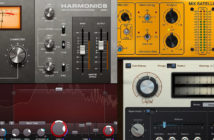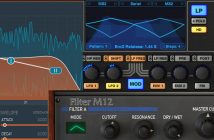Getting the results you want from compressors can often be the key to a tight, modern-sounding mix.
But part of the problem with learning about compression, and using compressors effectively, is that it can be quite a challenge to even understand what compressors really do, or what it is we’re actually trying to achieve with them. One reason why it’s difficult at first is that you’re listening for changes in the transients/dynamics rather than the frequency content. We can all tell the difference between a high frequency sound and a low one, but to the unpracticed ear it can be a bit more tricky figuring out what’s happening to the dynamics of sounds through a compressor – and more pertinently, what settings are going to sound the best in the context of a complete mix.
Understanding what compressor parameters do in the abstract is not actually too difficult, given a proper explanation. But even then, figuring out how best to deploy them in the context of a mix is tricky. How do you know whether or when to compress? How much compression is enough, or too much? What are the right attack and release times for a given situation?
Mastering Compression: The Core Principle
The thing about mastering compression is that you’re not really just learning how to operate a piece of equipment: you’re learning to listen to, understand and manipulate the internal dynamics of your tracks.
Compressors are your main tool for manipulating the dynamics of both individual hits and sounds, and the mix as a whole. Of course there are many factors that contribute to the dynamics of a sound, or a whole track: what sort of instrument created the sound, how it was played, and most importantly, the skill and sensitivity of the person giving the performance; but compression is the producers tool used to tame or accentuate the existing dynamics, or in some cases to introduce additional dynamics.
The Cumulation Effect: Mix Compression Strategies
Another tricky aspect of compression to grasp is that the differences in dynamics they introduce can be extremely subtle – compression is far more about the cumulative effect of many individually compressed sounds being brought together, and the relationships between sounds with different dynamics, as it is an obvious process pasted over the whole track. This is why it’s important, once you grasp the basics, to also consider an overall strategy for how you’re going to implement compression in a mix.
If all that sounds like a lot of hard work and a bit dry and technical, don’t worry: once you get how the internal dynamics and dynamic range of individual sounds and complete mixes can be controlled and shaped, not only will you feel like a sonic wizard, you’ll be well on your way to becoming a Pro Sound master. Your mixes will simply sound more powerful, focused and full of character. Check out the new ebook, which answers all the questions and guides you through the potential pitfalls towards compression mastery:
The Ultimate Guide to Compression Ebook
Compression demystified: We start with an introduction to the principles behind the process, explaining exactly why compression is useful and how you can use it to enhance your music.
Set up a compressor effectively in 30 seconds: Each parameter covered in detail, and how they work together to create a range of processing effects on your music.
Compression Strategies: From using compression to correct technical problems, to applying it for more creative, ‘character’ effects; From individual instruments to full mix compression, it’s all covered.
Advanced Compression Techniques: Parallel processing and Sidechain compression fully explained.
BONUS Compression Pro Tips: A list of other hard-won nuggets of compression wisdom that didn’t fit in the main text.





